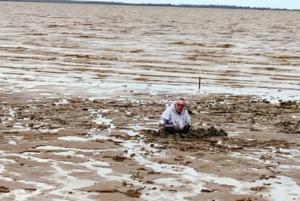Are new aircraft carriers sailing blind?

In a recently released report from the National Audit Office, it’s been revealed that there is ‘slower progress in developing the crucial supporting activities that are needed to make full use of a carrier strike group, such as the Crowsnest radar system and the ability to resupply the carriers’.
The report, Carrier Strike – Preparing for deployment, examines how the programme has been managed since 2017 and how the risks towards achieving the full capabilities of a carrier strike group are being addressed.
This, says Caleb Larson, writing for The National Interest, shows that although Britain’s new aircraft carriers have successfully conducted sea trials and will be ready for deployment in tandem with the United States next year, the Ministry of Defence is struggling to develop the necessary carrier support infrastructure.
While Larson is interested in the MoD’s decision to forgo assisted takeoff and landing equipment after the projected costs for the equipment doubled, he focuses on radar and support.
“While on deployment, the carriers are intended to be accompanied by one or more destroyers, at least one anti-submarine warfare frigate, and additional ships for resupply and support,” Larson writes. “Of significant importance to the carrier’s safety are their Merlin anti-submarine warfare helicopters.
“Lockheed Martin designed and tested the Merlin’s new submarine radar, the Crowsnest. The radar system is intended to “provide long-range air, maritime and land tracking capabilities that will ensure early detection of potential threats and vital surveillance for the entire fleet,” according to the Lockheed Martin website.
“Although the NAO considers the radar system a ‘crucial element of protection’ for the carriers, it is eighteen months behind schedule. The Crowsnest radar capability will not be ready for operational deployment until September 2021. The NAO laid blame squarely at the feet of the aerospace company Thales, a Lockheed subcontractor for this project.”
This means that the NAO estimates that both carriers will not have full radar detection capability until May 2023.
“The other significant setback to the class is an insufficiently developed logistical support system, specifically support ships that would provide ammunition, food, and fuel to the carriers. Currently the Royal Navy has only a single ship available to resupply a carrier at sea – significantly hampering deployment tempo,” says Larson.
Despite the setbacks, the class has been deemed ready by the NAO for their first operational deployment with the United States in 2021 and will reach initial operating capability by December of this year – but with a limited radar capability. Until the Royal Navy’s Merlin subhunter helicopters are equipped with the radar capability they’ve been promised, the Queen Elizabeth-class will be left vulnerable.
Read Larson’s full article in The National Interest.










